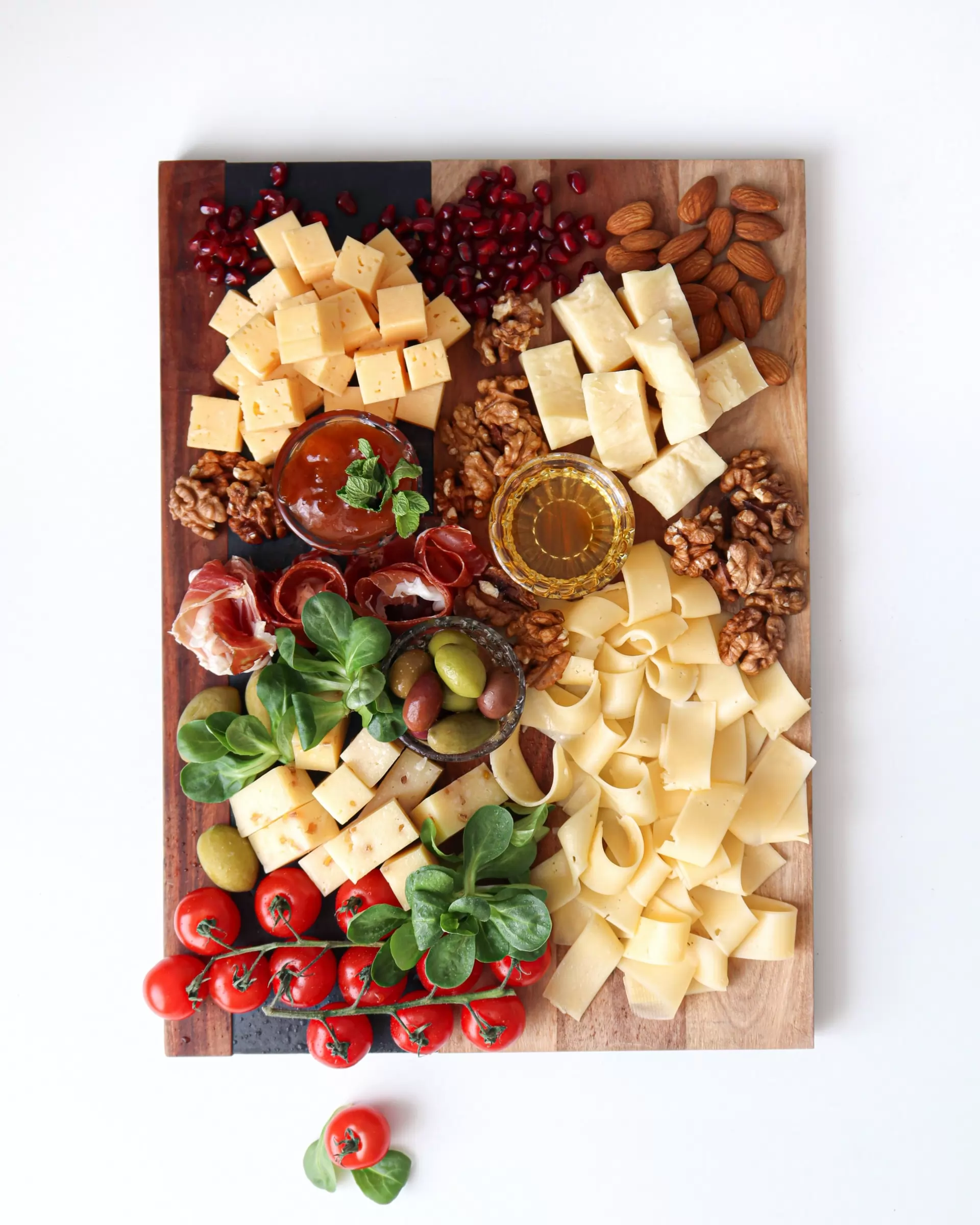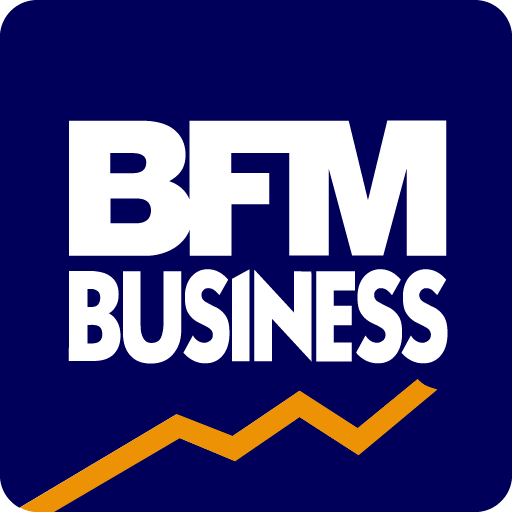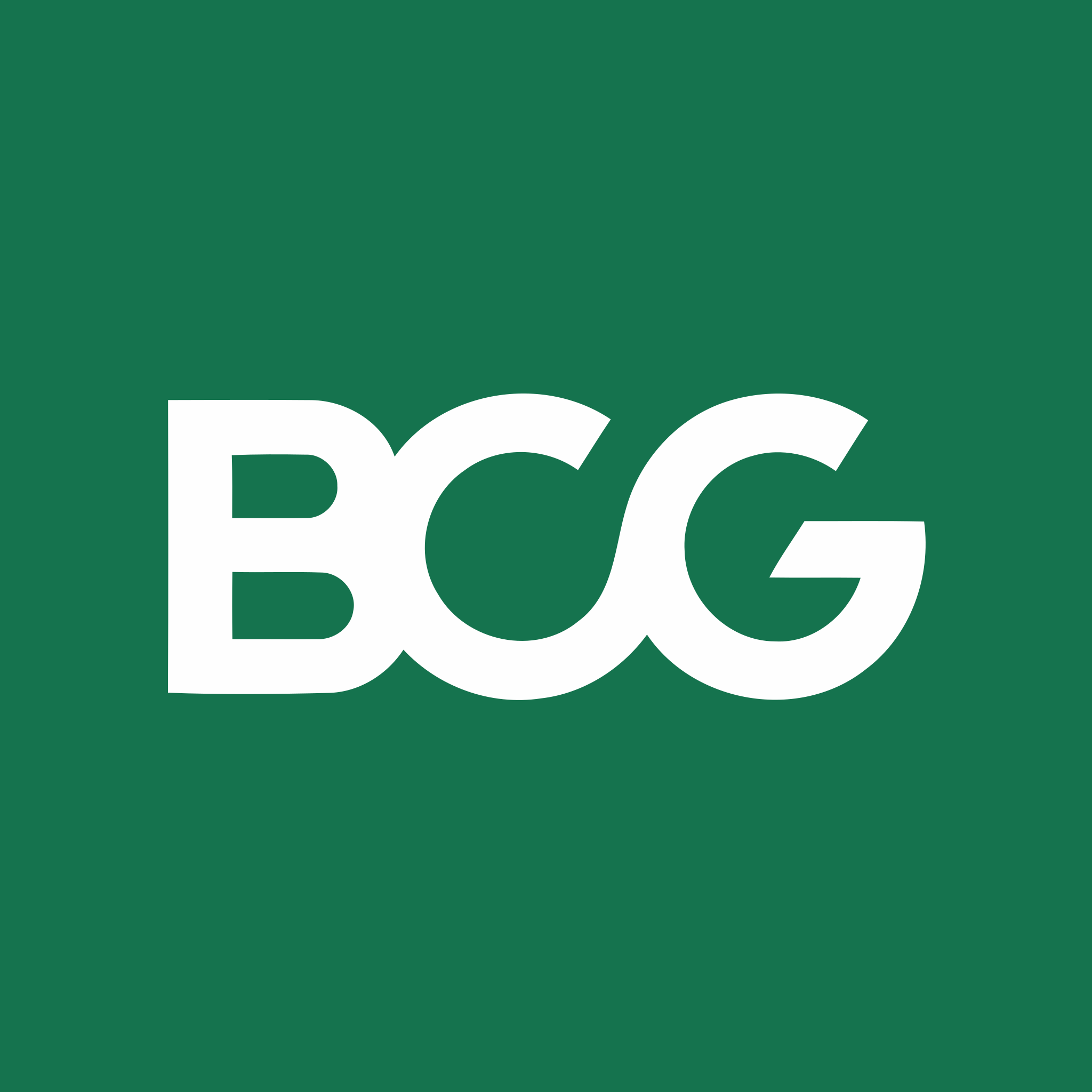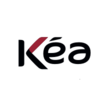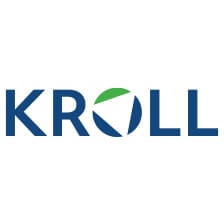Summary of our market study
The global cheese market, valued at $92 billion in 2022, is expected to grow to $132 billion by 2032, with an annual growth rate of 3.7%. Despite the pandemic, Spain's cheese market experienced growth during 2020 and 2021, driven by increased at-home consumption as restaurants and bars closed. The United States is the leading consumer of cheese worldwide, but Western Europe is the largest market by sales figures. Spain stands out for its high consumption of fresh cheese, with over 102 million kilos consumed in 2020, followed by semi-cooked and processed cheese.
The domestic cheese market in Spain was valued at 2.8 billion euros in 2021, with per capita consumption reaching 7.84 kilos. Spain's cheese trade indicates a higher reliance on imports, with a coverage rate of 42.2% in 2022, and their main import origins are the Netherlands, Germany, and France. The country's most revered cheese, Manchego, had a record 17.2 million kg produced in 2021, with a significant portion being exported, particularly to the United States. Trends also show a rise in organic cheeses, lactose-free options, and plant-based alternatives reflecting changing dietary preferences among Spaniards.
Evolving Trends in Spain's Cheese Consumption Landscape
Spain, known for its diverse culinary traditions, has seen a remarkable shift in its cheese consumption trends. While traditionally not as central in Spanish cuisine compared to other countries, the cheese market in Spain has undergone a significant transformation, particularly in light of recent global events. The onset of the Covid-19 pandemic catalyzed an upsurge in domestic cheese consumption as Spaniards turned to home cooking while eateries remained closed. Interestingly, the year following the return to normalcy, 2021, marked a dramatic decrease in at-home cheese indulgence. This oscillation underscores the direct impact of lifestyle changes on cheese buying behaviors. Despite this, there was an observed increase, suggesting a lingering inclination towards cheese by Spanish households. Spaniards have demonstrated a penchant for certain cheese types, with fresh cheese leading the pack, comprising nearly 30% of consumed cheeses. Consumption patterns also indicated a seasonal proclivity, particularly during the festive period, with a marked spike in cheese interest and sales in December.
The Spanish cheese market displays a dynamic structure, with a spectrum of cheeses – from internationally renowned Manchego to a gamut of Protected Designation of Origin varieties. These varied cheeses reflect Spain's regional diversity and the intricate tapestry of its cheese-making traditions. In terms of production volumes, buoyed by both domestic demand and a robust export market. Manchego's eminence extends beyond national borders, with export figures reaching upwards of 70% of its total production. Other cheese types, such as Parmigiano Reggiano, have also enjoyed burgeoning popularity, with Spain posting the highest uptick in consumption rates within Europe. One cannot overlook the gradual but perceptible shift towards accommodating varying dietary preferences, such as lactose intolerance and plant-based diets.
The manufacturing landscape is adapting to incorporate cheeses with reduced lactose content as regional consumption modulates according to lactose tolerance levels. Parallel to this, the plant-based cheese alternative market has flourished, finding a place in numerous Spanish households driven by health, environmental, and ethical considerations. The regulatory framework plays a pivotal role in safeguarding the integrity of Spain's cheese varieties.
Diverse Competitors Shaping the Cheese Industry Landscape
The cheese market is not only diverse in its product offering but also in the companies that operate within the industry. These players vary widely in size, market presence, and specializations, serving to meet the eclectic demands of consumers both domestically and internationally.
- Nestlé is a household name that requires little introduction. It stands as one of the giants in the food and beverage industry, with a strong international presence that includes a vast array of cheese products in its portfolio. Nestlé's influence extends far beyond cheese, but its presence in this sector contributes to its formidable market share.
- Lactalis Group, another behemoth in the dairy sector, roots itself deeply within cheese production. Its expansive reach and dedication to cheese and dairy make it a key player in driving trends and market dynamics on a global scale.
- Savencia Fromages & Dairy is recognized for its innovative approach to cheese and dairy products. With a focus that extends into high-quality cheese offerings, Savencia is a significant influencer in both established and emerging cheese trends.
- Mondelez Spain might be better known for iconic snack brands, but its investment in cheese products underlines its versatile approach to meeting consumer needs in various food categories.
- Arla Foods Spain, part of the multinational cooperative Arla Foods, offers a range of cheese products that tap into the growing demand for wholesome, natural dairy items. Their commitment to organic and sustainable practices resonates with contemporary consumer values.
- Among national champions, Grupo Garcia Baquero takes a prominent position, offering a variety of traditional and beloved cheese types that cater to local tastes and preferences. Their dominance in the Spanish market speaks to their ability to align with regional culinary preferences.
- Queserias Entrepinare stands as another prominent name with a strong focus on cheese production. Their growth and sizable market share are testaments to their product quality and market understanding.
- Grupo TGT showcases a comprehensive portfolio of cheese products, solidifying their status in the market and demonstrating their competency in meeting the diverse demands of cheese aficionados.
- Lafuente is notable for its artisanal approach to cheese-making, providing consumers with high-quality, premium products that emphasize traditional methods and superior taste profiles.
- Mantequerias Arias represents a legacy in the Spanish cheese market, with their brand resonating with heritage and a commitment to maintaining the highest standards in cheese production.
to understand this market
Detailed content of our market study
 Inforamtion
Inforamtion
- Number of pages : 35 pages
- Format : Digital and PDF versions
- Last update :
 Summary and extracts
Summary and extracts
1 Market overview
1.1 Definition and presentation
Cheese is a milk-based culinary preparation widely consumed throughout the world. Cheese can be added to a variety of dishes, as a starter or main course, or eaten on its own before dessert. There are countless varieties of cheese, depending on the type of milk used, the fermentation method, the type of cheese (soft or hard, etc.) and the country of origin.
Worldwide, the leading customer market for cheese consumption is the United States. They are followed by France, Germany, Russia, Brazil and Italy. However, a comparison of sales figures shows that Western Europe is the world's leading market. Growth is also on the cards in most European Union countries, where cheese consumption is up slightly.
In Spain, fresh cheese consumption stands out in particular, with over 102 million kilos consumed in the country in 2020. Semi-cooked cheese comes second with 92.13 million kilos, followed by processed cheese (43.27). Far from having suffered from the health crisis in 2020 and 2021, cheese sales in the Iberian Peninsula grew over the period thanks to the maintenance of the main cheese distribution channels: supermarkets, hard-discounts and hypermarkets.
1.2 The global cheese market
The global cheese market has been valued at US$** billion in ****, and is expected to reach around US$*** billion by ****, at an annual growth rate of *.*%. Innovations in the sector, often driven by major groups such as Lactalis, Savencia and Nestlé, are driving market growth.
World cheese market value World, ****-****, US$ billions imarcgroup
The global cheese market is largely dominated by theEuropean Union, with around ** million tonnes produced each year. It is followed by the United States with around * million tonnes. Within Europe, the market is dominated by Germany, which accounts for almost **% of production, followed by France (***). Spain ranks bottom in terms of consumption, with just *.* kg / inhabitant in ****.
1.3 The domestic market
Cheese represents **.*% of the total volume of dairy products, and **.*% of the value of this market. In ****, the cheese market was valued at *.* billion euros. Most cheese purchases are made at the end of the year, during the festive season.
Monthly cheese market in Spain Spain, ****, in millions of euros Source: ****
Cheese purchases are down **.*% in volume terms on ****, translating into a **.*% drop in sales. However, compared with ****, cheese is gaining in household presence, with an increase of *.*% in volume and *.*% in value. Per capita consumption in **** is *.** kilos of cheese, **.*% less than in **** and *.*% more than in ****. *.*% more than in ****.
Cheese consumption by type Spain, ****, in millions of kg and millions of euros Source: ****
While cheese is a widespread foodstuff in Spanish households, it does not feature very prominently in Spanish cuisine.
1.4 Foreign trade in cheese
Foreign trade in cheese is on an upward trend, despite a slight downturn in **** due to the pandemic. Information on international trade in cheese can be found under UN Comtrade code ****: Cheese and curd .
International trade in cheese and curd Spain, **** - ****, in millions of euros and in % Source: ****
The chart above illustrates Spain's cheese trade. It shows that Spain imports more cheese than it produces and exports. In fact, the coverage rate (***) was **.*% in ****, implying that imports are more than twice as high in value as exports.
Main cheese export destinations Spain, ****, in Source: ****
Spain's main customers are France, which accounts for **.*% of exports, followed by Portugal (***).
Main origins of cheese imports Spain, ****, in Source : Trade Map The chart above shows Spain's main cheese suppliers. In first place are the Netherlands with almost a quarter of imports (***), followed by Germany with **.*% and France with **.*%.
1.5 The impact of the health crisis on the cheese market
The Covid-** crisis had a positive impact on cheese consumption in Spain. As restaurants and bars closed their doors, Spaniards turned to home cooking. As a result, more and more Spaniards consumed cheese, either as an accompaniment to meals or in their own kitchens.
The return to normal in **** saw a drastic drop in cheese consumption at home.
Trends in cheese consumption following the pandemic Spain, **** VS ****, in Source: ****
2 Demand analysis
2.1 Trends in cheese consumption in Spain
On average, Spanish households spend *.**% of their food and beverage budget on cheese, implying an approximate per capita expenditure of **.** euros per person per year. While total cheese consumption in the country is generally in the region of *** million kg per year, as mentioned above, consumption is set to rise considerably in ****, reaching *** million kg. In ****, Spaniards consumed *** million kg of cheese.
Annual cheese consumption in Spain Spain, **** - ****, in millions of kg Source: ****
Cheese consumption also responds to seasonal demand. The Google Trends index shows that cheese is particularly popular during the festive season. In fact, the Google Trends index provides an assessment of interest in the search for a particular term on Google. However, there was a further peak in April ****, reflecting changes in habits due to the pandemic.
Interest in searching for "queso" on Google Spain, **** - ****, in Google Trends index Source: ****
This strong interest at the end of the year is logically reflected in cheese sales. These were highest in December, with ***.* million euros spent on cheese purchases in the country.
Cheese consumption at home Spain, **** - ****, in millions of euros Source: ****
2.2 Typology of cheeses consumed by Spaniards
Fresh cheeses take center stage
Nearly a third of the cheeses consumed by Spaniards are fresh cheeses (***).
Breakdown of cheeses by consumption Spain, ****, in Source: ****
2.3 Cheese consumers
It's difficult to establish a typical cheese consumer profile in Spain. Nevertheless, it would appear that households with children (***), where the person responsible for purchases is aged between ** and **, are the biggest consumers.
Cheese purchases and consumption increase almost linearly with age, with people under ** consuming an average of *.* kg of cheese each year, compared with an average of *.* kg for those aged ** and over.
Cheese consumption by age Spain, ****, in kg per capita Source: ****
The autonomous community that consumes the most cheese is Catalonia, closely followed by Andalusia with **.*% and **.*% of national consumption respectively.
Source: ****
Nevertheless, it is important to look at cheese consumption in relation to the number of inhabitants. In this respect, the autonomous region that stands out for its intensive cheese consumption is the Canary Islands, which consumes a higher proportion of cheese than its population weight. This phenomenon can also be observed in Murcia, the Balearic Islands, Galicia and the Principality of Asturias. On the other hand, La Rioja and the Comunidad Foral de Navarra consume less cheese than their population weight.
Consequently, the individuals with the highest per capita cheese consumption are the inhabitants of the Canary Islands. At **.* kg of cheese per capita per ...
2.4 The popularity of certain cheeses is growing
The reign of Manchego
La Mancha is home to the largest number of cheese factories in the world. More than *** farms in the region breed and raise Manchego ewes, while ** companies produce Manchego cheese from this milk. Production is rising to meet demand, and **** saw a record **.* million kg produced.
While Manchego is a great success in Spain, it is also highly appreciated abroad. It is Spain's most exported cheese, with almost **% of total production (***), with both forms of Machego followed by Zamorano in **th place.
Parmegiano Reggiano
The year **** saw a considerable increase in the consumption of Parmigiano Reggiano in Spain. According to the Parmigiano Reggiano consortium, Spain became the country with the highest increase in consumption in ****. While **** had already been a very interesting year, with sales of *.* million euros for Parmegiano Reggiano, the first nine months of **** saw a *.*% increase in sales. The market also seems to be developing positively in terms of volume, with an increase of **.*% in the third quarter of **** compared to ****[***].
3 Market structure
3.1 Cheese value chain
The cheese-making process can be summarized as follows:
Once matured, the cheese is packaged, transported and distributed to the consumer. Some cheese is sold to the catering trade, some to supermarkets and traditional distribution channels, and a small proportion is supplied directly to consumers by producers. The production stages vary between the different varieties, with fresh cheeses requiring fewer stages (***)[***].
3.2 Production
Cheese production depends on milk production, part of which forms the basis for the manufacture of this foodstuff. Milk production is divided into * main sectors: cattle, sheep and goats.
In Spain, cow's milk production is concentrated in the south of the country, with Andalusia accounting for *** thousand tonnes of cow's milk produced in ****. The Autonomous Communities of the North-East (***) have a minimal and almost negligible production.
As for the sheep sector, it is dominated by the center of the country. Castilla - León and Castilla - La Mancha are the main sheep cheese-producing regions. However, the sector is experiencing some difficulties. The number of farmers declaring deliveries of raw ewe's milk has fallen from over *,*** in **** to just over *,*** in ****.
In addition, according to two reports by the French Ministry of Agriculture, Fisheries and Food (***) in June **** on the sheep and goat dairy sector, the number of farmers declaring deliveries of raw ewe's milk has fallen from more thanleveurs déclarant des livraisons de lait cru de chèvre a également diminué de plus de * *** au cours des cinq dernières années, passer de * *** producteurs en **** à * *** en ****. Andalusia is the country's leading producer of goat's milk.
Although some sheep's ...
3.3 Distribution channels
Supermarkets and self-service outlets are the preferred distribution channel for cheese purchases. They account for over half of all cheese sold by volume. They are followed by discount stores (***).
Breakdown of sales volumes by distribution channel Spain, ****, in Source: ****
While cheese dairies occupy a small share of cheese distribution in terms of volume, they are more significant when it comes to sales value. In fact, the average price of cheese formed in cheese dairies is significantly higher than the average, reaching €**.** versus €*.** on average.
Average prices and year-on-year change by distribution channel Spain, ****, in euros Source: ****
4 Offer analysis
4.1 The different cheeses found in Spain
There is a huge variety of cheeses in Spain (***) in Spain. The PDOs include * cow's milk cheeses, * goat's milk cheeses, * ewe's milk cheeses and * mixed milk cheeses.
Source: ****
4.2 Average applied prices
Average prices in the cheese sector are directly linked to production prices for dairy products. The latter have been rising steadily since ****, with a peak in ****, due to the energy crisis and shortage of resources.
Monthly variations in producer prices for dairy products Spain, **** - ****, in Source: ****
In ****, the average price of cheese per kilo was €*.**, *.*% higher than in ****. However, following the upward trend, the consumer price of cheese also rose sharply in **** (***) , before stabilizing in early ****.
Monthly variations in cheese-forming prices Spain, **** - ****, in Source: ****
4.3 Supply trends: organic, lactose-free and plant-based alternatives
The rise of organic cheeses in national consumption
In ****, around **,*** tonnes of raw organic milk were produced (***).
Ready-made cheese and lactose-free cheese
Genetic studies have shown that Europe is divided in two when it comes to the prevalence of lactose intolerance. Since prehistoric times, populations in the north of the continent have had to adapt to a harsher climate, where the absence of certain nutrients available year-round in more temperate regions forced them to seek them out through milk consumption. Hundreds of thousands of years of evolution have ensured that even today, lactose intolerance problems remain rare in these northern countries, at less than **%, although the percentage rises the further north you go. the further south you go, with rates approaching **% among populations originating from southern Africa, America and Oceania. The rate of lactose intolerance can reach **% in certain regions of Spain, mainly in the south.
As a result, cheese production and consumption vary from region to region. In the north, regions such as Cantabria, the Basque Country, Galicia and parts of Castilla y León favor plain consumption, while in the south, cooking with cheese (***) is more prevalent, as in Catalonia and, above all, the Balearic Islands. Indeed, cooking makes ...
5 Regulations
5.1 Cheese appellation regulations
Protected Designation of Origin (***):
Agri-food PDOs are protected at European level by:
Parliament Regulation (***) No. ****/**** of November **, **** on quality schemes for agricultural products and foodstuffs. Commission Implementing Regulation (***) No ****/**** of the European Parliament and of the Council on quality schemes for agricultural products and foodstuffs.
Protected Geographical Indication (***):
Agri-food PGIs are protected at European level by:
Regulation (***) No. ****/**** of the Parliament on quality systems for agricultural products and foodstuffs. Commission Implementing Regulation (***) No ****/**** of the European Parliament and of the Council on quality schemes for agricultural products and foodstuffs.
Organic designation (***):
At European level, there are various pieces of legislation relating to AB:
Regulation (***) n°***/**** of June **, **** on organic production and labelling of organic products. Commission Regulation (***) No ***/**** as regards organic production, labelling and inspection. Commission Regulation (***) No ***/**** as regards the arrangements for importing organic products from third countries.
6 Positioning the players
6.1 Segmentation
- Nestlé Groupe
- Lactalis Groupe
- Savencia Fromage & Dairy groupe
- Mondelez Groupe
- Arla Foods
All our studies are available online in PDF format
Take a look at an example of our research on another market!
 Choosing this study means :
Choosing this study means :
Access to more than 35 hours of work
Our studies are the result of over 35 hours of research and analysis. Using our studies allows you to devote more time and added value to your projects.
Benefit from 6 years' experience and over 1,500 industry reports already produced
Our expertise enables us to produce comprehensive studies in all sectors, including niche and emerging markets.
Our know-how and methodology enable us to produce reports that offer unique value for money.
Access to several thousand articles and paid-for data
Businesscoot has access to all the paid economic press as well as exclusive databases to carry out its market research (over 30,000 articles and private sources).
To enhance our research, our analysts also use web indicators (semrush, trends, etc.) to identify market trends and company strategies. (Consult our paying sources)
Guaranteed support after your purchase
A team dedicated to after-sales service, to guarantee you a high level of satisfaction. +44 238 097 0676
A digital format designed for our users
Not only do you have access to a PDF, but also to a digital version designed for our customers. This version gives you access to sources, data in Excel format and graphics. The content of the study can therefore be easily retrieved and adapted for your specific needs.
 Our offers :
Our offers :
the cheese market and cheese dairies | Spain
Espagne 49
5 reports pack (-15%) ES Spain
- 5 reports at €75.6 excluding VAT per study to choose from our Spanish catalogue for 12 months
- Save 15% on additional studies purchased
- Choose to be refunded any unused credit at the end of the 12-month period (duration of the pack)
See the terms and conditions of the pack and the refund of unused credit.
